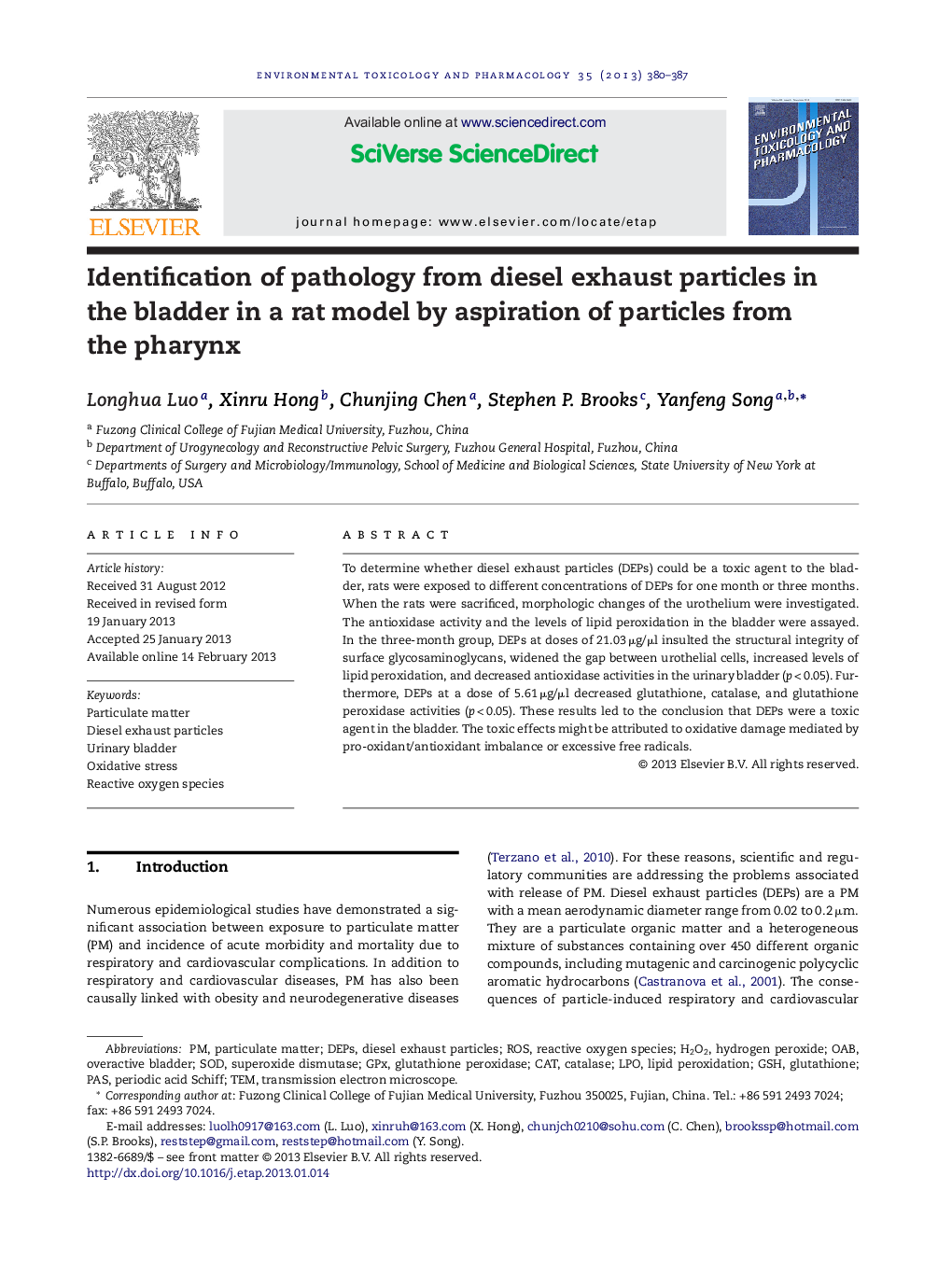| Article ID | Journal | Published Year | Pages | File Type |
|---|---|---|---|---|
| 2583174 | Environmental Toxicology and Pharmacology | 2013 | 8 Pages |
To determine whether diesel exhaust particles (DEPs) could be a toxic agent to the bladder, rats were exposed to different concentrations of DEPs for one month or three months. When the rats were sacrificed, morphologic changes of the urothelium were investigated. The antioxidase activity and the levels of lipid peroxidation in the bladder were assayed. In the three-month group, DEPs at doses of 21.03 μg/μl insulted the structural integrity of surface glycosaminoglycans, widened the gap between urothelial cells, increased levels of lipid peroxidation, and decreased antioxidase activities in the urinary bladder (p < 0.05). Furthermore, DEPs at a dose of 5.61 μg/μl decreased glutathione, catalase, and glutathione peroxidase activities (p < 0.05). These results led to the conclusion that DEPs were a toxic agent in the bladder. The toxic effects might be attributed to oxidative damage mediated by pro-oxidant/antioxidant imbalance or excessive free radicals.
► Diesel exhaust particles (DEPs) was a toxic agent to bladder. ► DEPs widened the gap between urothelial cells. ► DEPs insulted the structural integrity of surface glycosaminoglycan. ► DEPs decreased antioxidase activities in bladder. ► DEPs increased levels of lipid peroxidation in bladder.
